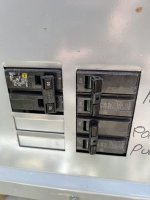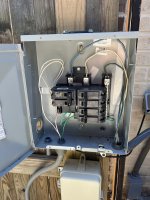Single speed pump, the breaker on my main panel in the utility room is a regular 30A that feeds into the pool equipment subpanel (non-GFCI 20A dual pole breakers currently for the pump). I have a rather simple setup, currently just one single speed pool pump that was running from that subpanel.
I read a little bit on the GFCI and noticed that there might be some specific Siemens breaker needed if I am going to VSP in the future. Another concern I have is the false trips as I'm setting my pump on via a intermatic mechanical timer and they run on night hours. I don't want a too sensitive GFCI breaker that cuts the power to the pump during the night without me realizing it.
Can you guys point some direction wrt what breaker I should put and in my current situation if GFCI breaker offers more benefits (electric safety) than concerns (false trip shuts off pump causing not enough circulation)?
Thanks a lot.
I read a little bit on the GFCI and noticed that there might be some specific Siemens breaker needed if I am going to VSP in the future. Another concern I have is the false trips as I'm setting my pump on via a intermatic mechanical timer and they run on night hours. I don't want a too sensitive GFCI breaker that cuts the power to the pump during the night without me realizing it.
Can you guys point some direction wrt what breaker I should put and in my current situation if GFCI breaker offers more benefits (electric safety) than concerns (false trip shuts off pump causing not enough circulation)?
Thanks a lot.
Last edited:



